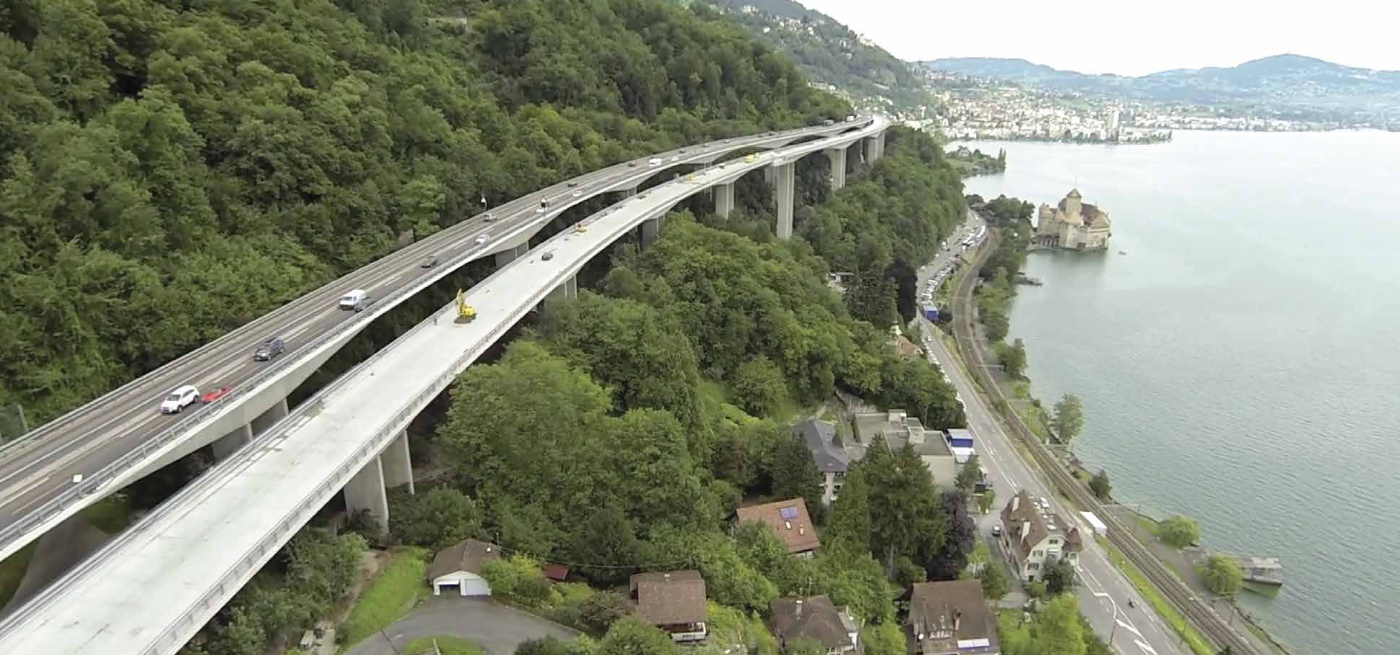

According to ASCE (American Society of Civil Engineers), “The U.S. has 614,387 bridges, almost four in 10 of which are 50 years or older. 56,007, or 9.1% of the nation’s bridges were structurally deficient in 2016, and on average there were 188 million trips across a structurally deficient bridge each day. While the number of bridges that are in such poor condition as to be considered structurally deficient is decreasing, the average age of America’s bridges keeps going up and many of the nation’s bridges are approaching the end of their design life. The most recent estimate puts the nation’s backlog of bridge rehabilitation needs at $123 billion.”
Determining the condition of bridges and making decisions regarding rehabilitation or replacement is referred to as Asset Management. DOTs across the U.S. dedicate significant resources to managing their bridge assets through a variety of preventative and preservation methods.
DOTs typically classify the condition of bridges using a common rating system of 0 to 9 (9 being excellent and 0 being failure) referred to as the General Condition Rating (GCR). Based on that condition rating, bridges then fall into four major asset categories:
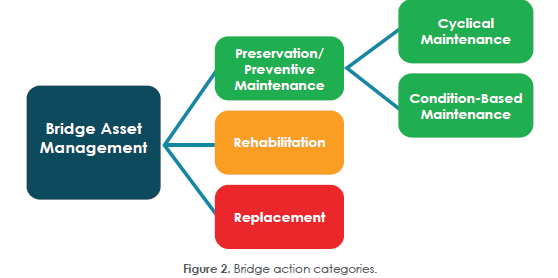
Inspection of the bridge yields a rating of each of the components and the development of the overall bridge rating, the condition rating scale includes “the materials used in the bridge, as well as the physical condition of the deck, superstructure, and substructure components.” The GCR system was developed by the Federal Highway Administration and is described in the FHWA Coding Guide.
As of January 2018, 54,000 U.S. bridges were deemed to be in poor condition or worse and in serious need of rehabilitation. Though this number has decreased in the last two years the cost for rehabilitation has increased. DOT Engineers are keenly aware of the need for bridge rehabilitation and estimate the total cost of highway bridges needing rehabilitation in the U.S. at 17 Billion dollars.
Many of today’s highway bridges were built in the 1950’s and 1960’s. These structures are now reaching or exceeding their proposed life span. State DOTs are facing a significant problem balancing the costs of operations and maintenance, new construction and the ever-growing needs for rehabilitation and repair of their aging infrastructure. Innovative approaches are needed to provide cost effective repair methods with a focus on the longevity of those repair solutions.
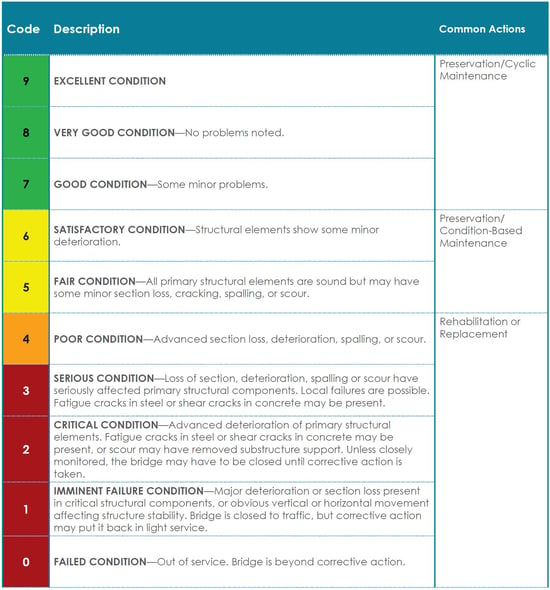
In order for the United States to once again be the leader in bridge infrastructure and innovation, past techniques that worked (or didn’t work) and the current methods being used must be reevaluated. New techniques and recent advancements in concrete materials hold great promise for establishing the right path.
Traditional Materials Used for Concrete Bridges:
Modern bridges make use of concrete, steel or a combination of both. “Incorporation of fibers which comes in the category of high strength gaining materials is now incorporated for the construction of bridges. These materials are also used in order to strengthen the existing bridges.” According to the American Society of Civil Engineers, new “materials such as Ultra-High Performance Concrete” are adding longer life to bridges as the need for bridge innovation in the US is pressing.
Shortcomings of Traditional Concrete for Bridges:
“Most of the modern bridge construction makes use of concrete as the primary material. The concrete is good in compression and weak in tensile strength. The reinforced concrete structures are the remedy put forward for this problem.
The concrete tends to have a constant value of modulus of elasticity at lower stress levels. But this value decreases at a higher stress condition. This will welcome the formation of cracks and later their propagation.”
“Other factors to which concrete is susceptible are the thermal expansion and shrinkage effects. Creep is formed in concrete due to longtime stress on it.” When looking at steel used to strengthen concrete, it can only work for concrete for a certain amount of time as “steel fatigue is a problem in the older bridges... Compare steel bridges to a paper clip that's opened and bent back and forth until it breaks.”
Traditional concrete lacks longevity and strength, along with the factors listed above. Those factors are why fibers are being used to strengthen concrete for new bridges as well as maintain and rehabilitate existing bridges made with less-than-standard concrete.
In the US, the mindset up until recently can be summed up in one phrase – “Worst First.” Find the bridge that needs the most repair and start there. This method acts as a Band-Aid, solving an immediate problem - one bridge close to falling down - but doesn’t present a long-lasting solution.
After a bridge is constructed, it should be consistently monitored and placed in one of three broad categories (along with being assigned a number in the numbered actions scale above):
This image from the Federal Highway Act (FHWA) explains which category falls into a good rating or poor rating:

The rehabilitation phase is when a bridge is structurally deficient “because at least one major component of the span has advanced deterioration or other problems that lead inspectors to deem its condition poor or worse.”
The US infrastructure is currently overloaded with bridges in the rehabilitation category. With our ever-growing population and more commuters, it’s imperative for the States to adopt a proactive mindset to keep bridges from entering this category. This means prioritizing a bridge that only needs minimal maintenance and is considered in good or fair condition.
The US is on the right track thanks to the forward thought and action of Bridge Rehabilitation Engineers. The Preservation Guide announced, "The HBP (Highway Bridge Program) afforded State DOTs discretion to use funds not only for bridge rehabilitation and replacement but also for a broad array of preventive maintenance activities.” This is a huge step that will be noticed in the US infrastructure world in years to come.
The FHWA has seen the concerning infrastructure grade connect with the ‘worst first’ mentality and is currently striving to be more strategic and future-minded by implementing a bridge program seeking a balanced approach in preservation and rehabilitation. In the 2017 budget overview from the FHWA, they stated, "The need to invest in our transportation infrastructure becomes even more apparent when one considers not just the state of our infrastructure today, but where we are heading in the future." This change will ultimately slow and, with innovative options, potentially nullify the need for rehabilitation or rebuilding altogether.
When a bridge is in the phase of rehabilitation, as opposed to maintenance or repair, the cost is far greater because of the complexity of work, resources, and time needed. In a press release from USA Today, "Cities and states would like to replace the aging and vulnerable bridges, but few have the money; nationally, it is a multibillion-dollar problem.” “Selected states reported little change in the way they fund and manage highway bridges” to the Government Accountability Office (GOA) in a survey in 2016. They acknowledged it's not that states are unaware; some have made proposals to pass a plan for funding infrastructure needs, but they oftentimes stall due to fights over details which ultimately prolongs the national infrastructure problem regarding bridges.
Bridge Rehabilitation Engineers are restricted by state and federal budgets, leaving them using temporary repairs and patch fix jobs to stay ahead of deterioration.
For example, the highest priority bridge in Seattle, Washington would cost about $350 million to replace. According to the United States Government Accountability Office, “The state DOT distributes a total of about $35 million per year in federal funds to local agencies, which compete for a part of those funds. Given the gap in funding for large projects, officials said they will be forced to close large bridges that are deemed unsafe.”
Those who are hands-on in bringing up the infrastructure grade (DOT and Design Engineers) are greatly affected by the extremely tight budget they’re working with. Pressing needs of rehabilitation without the funds to fix the problems, and the responsibility resting on their shoulders prolongs the problem.
There are two phases that take time for bridge rehabilitation. The first phase is completing a National Bridge Inspection Standards (NBIS) inspection and updating/inputting SI&A data into the state or federal agency inventory. This takes place within a 90/180 day period. The second phase – the construction - is when the public is affected by and experiencing the daily grind of a bridge going through rehabilitation.
The construction phase generally takes 24 months, assuming no greater repairs are needed outside of rehabilitation. Extra repairs needed would also warrant more inspection phases to be executed and documented, extending the construction period.
Though on paper all phases and procedures a laid out nice and neat, “there is considerable lag time between when state transportation officials report data to the federal government and when updates are made to the National Bridge Inventory.”
Starting in the 1950’s, bridges were built with an expected lifespan of 50 years. The Report to Congressional Committees from the US Government Accountability Office of federal bridge data shows “amount of structurally deficient deck area is greatest for bridges built from 1960 through 1974.” If you’re doing the math right, this means that those bridges are currently at their expected lifespan or have exceeded it already. Practically, that comes out to 54,000 bridges deemed structurally deficient today. Here’s a visual created by the American Road and Transportation Builders Association of the areas in the US that are dealing with the majority of bridge rehabilitation efforts to increase the overall infrastructure grade:
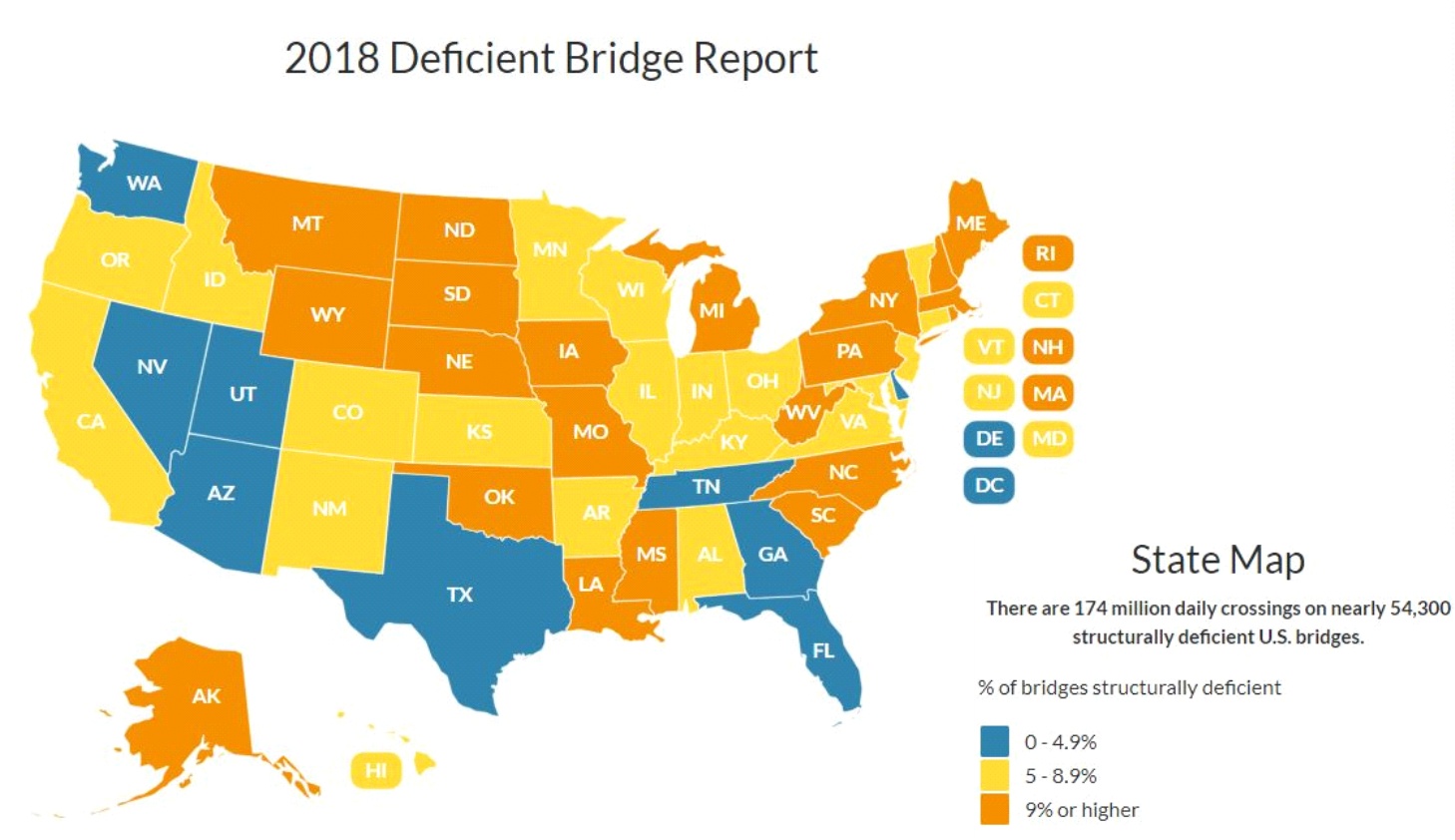
SOURCE: ARTBA 2018 Deficient Bridge Report
Most of us are too busy or trusting to think about a lack of safety when it comes to what we’re driving over. Thankfully, DOT’s and Design Engineers have safety as their first priority when it comes to bridge rehabilitation. As those inspecting bridges, they’re aware that “all that is required to cause a fracture critical bridge to collapse is a single unanticipated event that damages a critical portion of the structure.” Though safety is of the utmost concern, surprising collapses still happen. This is another area compelling DOT Engineers to look for better solutions; solutions that are innovative, safe, fast and ultimately, solve the current problems we’re all facing within transportation in America.
Some solutions they’re looking into are advanced concrete that will greatly contribute to minimizing rehabilitation needs.
The US infrastructure grade is on the rise due to methods being adopted like in the FHWA Preservation Guide of 2018. Even with new methods, the materials that have been used for the last 70 years keep the US in the game of Band-Aids, slings, and temporary fixes when it comes to our bridges. We need to be in a game of permanent solutions that check a bridge off the list because there’s no need for maintenance.
This will happen through:
Being proactive to prevent major problems
Using innovative materials that bring long-lasting solutions
Bridge Rehabilitation Engineers are looking into the new option of advanced concrete, Ultra-High Performance Concrete to be specific, because they see how it solves the current, pressing problems and brings solutions to their job in enabling America’s Transportation.
“Ultra-High Performance Concrete, or UHPC, is a ground-breaking (no pun intended) metallic reinforced cementitious-based material with extraordinary properties. UHPC can be used in a variety of bridge solutions to include joint fills, overlays, pier jacketing and a variety of other innovative applications.” UHPC Solutions® is eager to develop and expand the use and adaptation of ultra-high performing concrete technology in the infrastructure rehabilitation market in North America.
The materials of UHPC not only strengthen current structures but also extend their lifespan. DOT’s and civil engineers are hopeful as they see “New materials such as Ultra-High Performance Concrete… being used to add durability, higher strengths, resilience, and longer life to bridges.”
UHPC was developed in the 1980’s for structures that demanded super strength and corrosion resistance in Europe. Twenty years later, it became available in the states. “In a general sense, UHPC has proven to be particularly relevant in the applications where conventional solutions are lacking.”
Created for bridge rehabilitation and deck-overlays, UHPC Solutions® unique combination of materials “provides compressive strengths up to 29,000 pounds per square inch (psi) and flexural strengths up to 7,000 psi." The high performance and strength of this concrete are created by a carefully selected combination of ingredients, including:
The chemical reactivity and extremely fine grain size, measuring at a maximum of 600 micrometers, are what provide the enhanced durability.
“Originally designed to sustain an estimated volume of 10,000 vehicles per day, the Chillion Viaducts in Switzerland currently hold 50,000 vehicles daily.” These bridges were built in the 1960’s and after 50 years, were in need of rehabilitation. However, through inspections, the bridges were found to be structurally deficient along with having Alkali-Aggregate Reactions (AAR). This meant the mechanical properties were compromised requiring ...
“China has become the largest consumer of concrete products in the world.” As China watched their infrastructure they saw a need for a solution that met problems in energy saving, air pollution, and CO2 reduction. "[They] became more and more conscious of the need for a widespread adoption of … Ultra-High Performance Concrete.” It has been applied in civil engineering, specifically in bridge engineering. The first application of UHPC in civil ...
In the early nineties, UHPC was used as a “replacement of the existing wooden deck of a movable bridge, in the Dutch motorway 44, a solution with prefab panels made of heavy reinforced Ultra-High Performance Concrete. A cover of only ten millimeters was enough to ensure a durable solution.”
Early introduction and testing of UHPC began in 1994, over 20 years ago. The first use of UHPC for a North American bridge was in 1997, for construction of the Sherbrooke Pedestrian Bridge in Quebec, Canada. Although not a highway bridge, it has been exposed to light vehicle loadings for winter snow removal and severe freeze/thaw conditions as well as deicing salts for almost 20 years proving UHPC’s durability in an climate.
By providing strength, durability, ductility, and workability, UHPC accelerates, improves and advances the current infrastructure grade. Bridge Engineers are equipped to be problem solvers through UHPC, not problem prolongers.
Bridge Engineers are currently constrained by the list above: Cost, Time, Surplus of bridges needing Rehabilitation, not to mention the great concern for safety when considering the repairs they’re deciding to implement. UHPC has proven to bring solutions in each of these pain points of the US Infrastructure through these benefits: “simplified construction techniques, the speed of construction, improved durability, reduced maintenance, reduced out of service duration, reduced element size and complexity, extended serviceability life and improved resiliency.”
UHPC Solutions® is eager to help solve the deteriorating infrastructure problem in the US. By combining forces with their partners, who have brought over a century of infrastructure rehabilitation expertise, “UHPC Solutions® is meeting the demands of today’s need for accelerated bridge rehabilitation (ABC) with lasting results.”
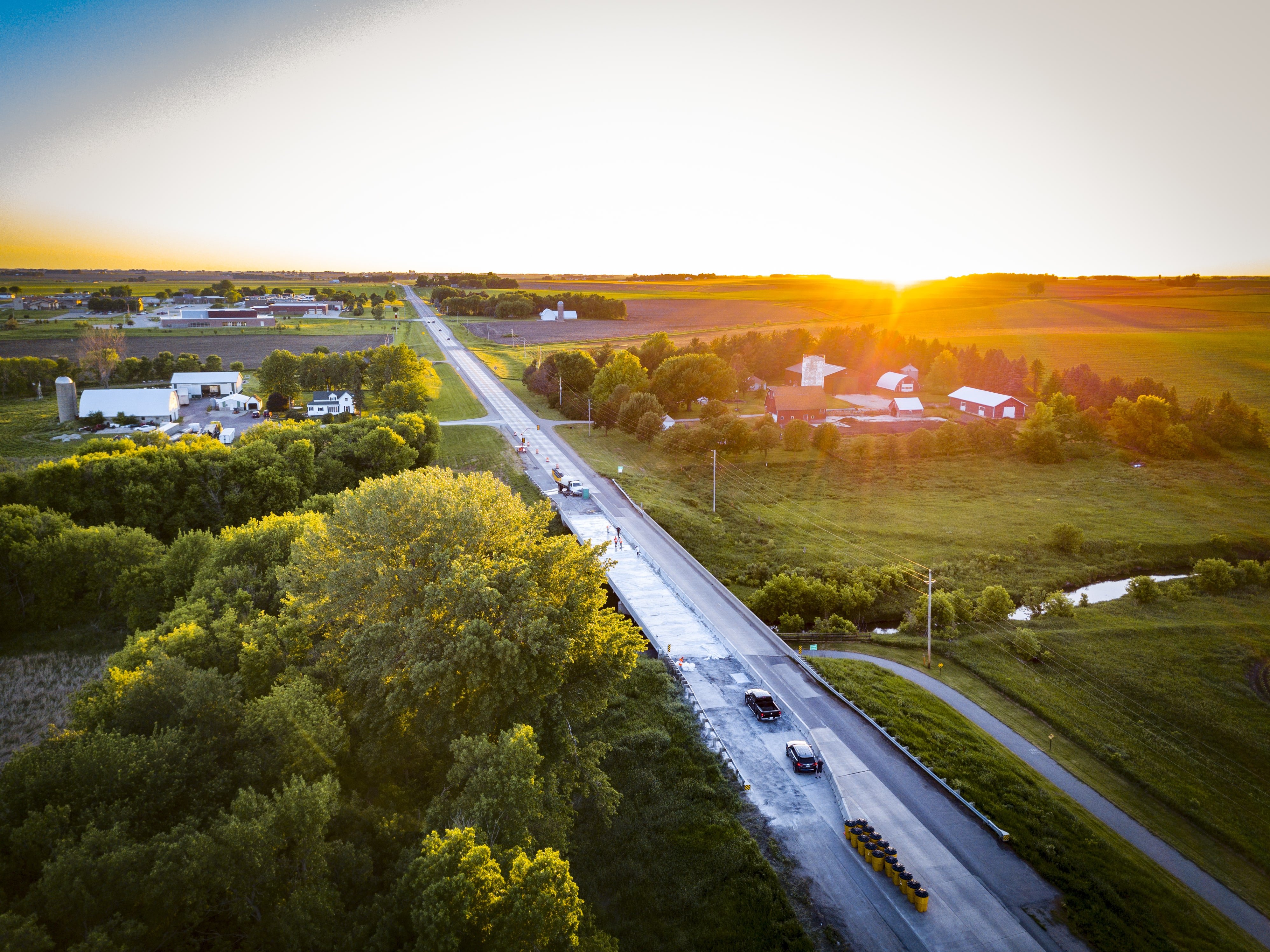
UHPC Solutions® can be utilized through their trusted and proven partnership with WALO and Posillico. Both companies have led the way in implementing UHPC as a solution. WALO has been serving the construction world for over 170 years and has executed their values every moment. Posillico, one of the top engineering contracting firms in New York, strives for excellence, and UHPC Solutions® allows them to continue doing that for the East coast.